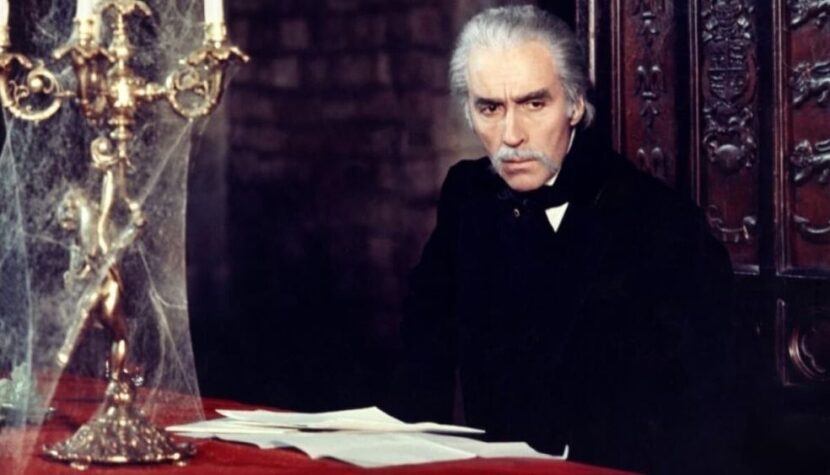COUNT DRACULA. An attempt at a faithful adaptation of Bram Stoker’s horror novel

Count Dracula was supposed to be the first film adaptation of Bram Stoker’s famous novel that remains faithful to the literary source. Did it really turn out that way?
The story is well known, but let’s recap: young lawyer Jonathan Harker travels from England to Transylvania, where he is to visit Count Dracula’s castle. In a nearby town, Harker is warned by the locals against continuing his journey, but he dismisses this as superstition and proceeds towards the castle nestled in the wooded mountains. On arrival, he is greeted by a gaunt old man who introduces himself as Dracula. Concerned, Harker notices that the count has no reflection in the mirror, and then he is led to an old crypt where three vampire women await him. By morning, Harker discovers two puncture marks on his neck; attempting to escape the castle, he leaps out of a window and into the river. Several weeks later, he wakes up in a psychiatric hospital in London, where another victim of Dracula, Renfield, is also confined. Meanwhile, the count arrives in London to terrorize Harker, his fiancée Mina, her friend Lucy, and Dr. Abraham Van Helsing – the only man who believes Harker’s tale of an ancient vampire reveling in human blood. Thus begins the uneven battle against the forces of darkness.

Since the publication of *Dracula* in 1897, Bram Stoker’s novel has been adapted hundreds of times for theater, film, television, radio, and comics. However, for a very long time, no one attempted to create a faithful version of the book for the screen. This task was taken on in the late 1960s by independent British producer and screenwriter Harry Alan Towers, who managed to attract the attention of Christopher Lee – known for his role as Dracula in the Hammer Film Productions horror films. Lee had frequently criticized Hammer’s loose approach to Stoker’s novel, so when Towers offered him a role in the first faithful adaptation of *Dracula*, the actor gladly accepted [1]. Towers wrote the screenplay (under the pseudonym Peter Welbeck) and originally intended to have Terence Fisher, a regular collaborator of Hammer, direct the film. For unclear reasons, this did not happen, and Jesús Franco, a Spanish master of B-movie cinema, ultimately took over as director. In addition to Lee, the cast included Herbert Lom (Van Helsing), Klaus Kinski (Renfield), Frederick Williams (Harker), Soledad Miranda (Lucy), and Maria Rohm (Mina).
Filming began in the fall of 1969 at the Tirrenia studios in Italy and in Barcelona; budget constraints prevented shooting on location in Romania. For the same reasons, the filmmakers’ plans to remain faithful to Stoker quickly fell by the wayside. The novel, originally over 400 pages long, provided material for a long, epic production in the style of expensive David Lean films, not for a cheap horror lasting just over an hour and a half. Therefore, many cuts, truncations, and simplifications were made, although Towers and Franco should be given credit: Count Dracula is indeed the first screen adaptation of Stoker’s book to include Quincey Morris, and the titular vampire initially appears as an old man with a beard who gradually rejuvenates under the influence of consumed blood. The most significant changes include the absence of scenes depicting the voyage of the Demeter schooner from Transylvania to England, Van Helsing’s stroke (a screenwriter’s invention – not present in Stoker’s work), and an improvised sequence by Franco showing stuffed animals manipulated off-camera by crew members.

This absurd scene is symptomatic of the entire film in many ways. The low budget is evident: a plastic bat dangling on a string, German shepherds “playing” wolves, polystyrene rocks crushing Dracula’s Romani acolytes, the excessive use of dramatic close-ups on actors’ faces… Count Dracula lacks the elegant atmosphere of Hammer horror films, although paradoxically, Dracula himself is the best interpretation of the character in all the films in which Christopher Lee played the role. The strongest aspect of Franco’s film, alongside the Barcelona locations, is the acting: not only Lee but also Lom, Miranda, and Kinski, who as Renfield actually ate real insects on set [a few years later, the German actor played Dracula in Werner Herzog’s *Nosferatu the Vampyre* (1979)]. Known for his dislike of directors, Kinski surprisingly “spared” Franco, saying, “He’s okay. He keeps his mouth shut” [2] [the actor collaborated with the director a total of four times, including on *Jack the Ripper* (1976)]. Count Dracula is an example of ambition outweighing budget: a film with certain merits but far from perfection.
[1] See S. Thrower, J. Grainger, *Murderous Passions: The Delirious Cinema of Jesús Franco*, London 2015, p. 220.
[2] A. Petit, *Jess Franco: or the Prosperities of B Movies*, Paris 2015, pp. 338–339.

